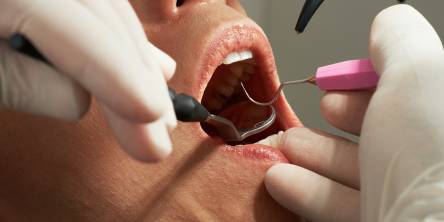6 Effective Treatment Options for Temporomandibular Joint Disorder (TMJ)

Temporomandibular Joint Disorder, commonly known as TMJ, is a condition that causes pain and dysfunction in the jaw joint and surrounding muscles. This disorder can arise from various factors, including teeth grinding, arthritis, jaw injuries, poor posture, or stress. TMJ can significantly impact daily activities like eating, talking, and even sleeping, lowering your quality of life. Treating TMJ promptly can alleviate discomfort and prevent complications.
Below are six effective treatments—both at home and medically administered—that can help manage TMJ symptoms.
1. Cold or heat compress
One of the simplest and most effective ways to reduce TMJ-related pain is through hot or cold therapy.
- Heat Therapy: Applying heat increases blood flow to the affected area, easing muscle stiffness and reducing pain. To create a heat compress, fill a bottle with warm water or use a heating pad. Apply it to the painful area for 5-15 minutes, and repeat this process up to 15 times daily for optimal results.
- Cold Therapy: Cold compresses, on the other hand, reduce blood flow to the area, helping to minimize inflammation and swelling. Cold also numbs the area, relieving pain temporarily. Wrap a pack of frozen vegetables or ice in a towel and apply it to the joint for short intervals several times a day.
2. Dental splints
Dental splints, such as bite plates and mouth guards, are widely used to manage TMJ symptoms. These devices work by preventing teeth grinding and jaw clenching, which are common contributors to jaw muscle tension and pain.
Typically, dental splints are worn at night when grinding and clenching are most likely to occur. They do not cause permanent changes to your teeth or jaw structure and can effectively reduce discomfort associated with TMJ.
3. Essential oils
Essential oils can provide natural relief for TMJ-related pain and muscle stiffness. Oils such as lavender, chamomile, eucalyptus, and rosemary are known for their sedative, anti-inflammatory, and pain-relieving properties.
To use essential oils, you can:
- Inhale them using a diffuser to relax tight jaw muscles.
- Dilute them with a carrier oil and massage the affected area gently.
While essential oils cannot serve as a standalone treatment for TMJ, they can enhance the effects of other therapies.
4. Botox injections
Botox injections have become a popular and effective treatment for TMJ. Botox works by relaxing overactive jaw muscles, reducing stiffness, pain, and teeth grinding.
Although the effects of Botox are temporary, they can last for up to three months, providing significant relief from TMJ symptoms. Before undergoing Botox treatment, consult a healthcare provider to discuss potential side effects and ensure this option is appropriate for your condition.
5. Medical Marijuana
For individuals living in states where medical marijuana is legal, this treatment can offer a safe and effective way to manage TMJ symptoms.
Cannabis helps reduce pain, muscle tightness, headaches, and insomnia associated with TMJ. Unlike opioids and other traditional pain relievers, medical marijuana has a lower risk of harmful side effects. To explore this option, find a licensed provider who offers medical marijuana treatment in your area.
6. Physical therapy
Physical therapy is another excellent approach to managing TMJ. A trained physical therapist can help improve jaw function, reduce pain, and prevent further complications.
Typical physical therapy for TMJ includes:
- Stretching Exercises: To release tight jaw muscles.
- Posture Education: Improving neck and shoulder posture to reduce jaw strain.
- Pain Management Techniques: To address discomfort and restore natural jaw movement.
Regular physical therapy sessions can make a significant difference in reducing TMJ symptoms and improving overall jaw function.
The bottom line
TMJ disorder can disrupt your daily life, but with the right treatment plan, you can find relief. Whether you choose home remedies like hot and cold therapy, medical treatments such as Botox or dental splints, or alternative approaches like physical therapy and medical marijuana, addressing TMJ promptly can improve your quality of life.
Consult a dentist or healthcare provider to determine the best treatment options for your specific needs. With a combination of these strategies, you can manage TMJ effectively and regain control of your daily activities.
Similar Articles
The desire for a healthy smile drives approximately 4 million people toward teeth straightening procedures. When it comes to straightening teeth, lingual braces offer a discreet alternative to traditional braces and clear aligners.
As we grow older, our dental needs evolve significantly. The carefree days of childhood tooth fairy visits transform into the more complex world of adult dental care. After age 25, many adults begin to notice changes in their oral health.
Missing teeth can cause a wide range of oral health issues. Nonetheless, over 120 million Americans are missing at least one tooth, and the figure is anticipated to climb as time passes.
A dental emergency doesn’t make an appointment. It shows up unannounced and unapologetic, usually in the middle of the night or during a meal that was supposed to be fun
A dental emergency can strike fast and without warning—during dinner, in the middle of the night, or just before a big meeting.
A wide range of factors can have a direct effect on your oral health. A balanced diet is essential, as is good oral hygiene and regular dental examinations. Many individuals think that nutrition alone can't improve oral health.
The results of wearing Invisalign aligners look stunning, and they are way more convenient than traditional braces. However, no one speaks about what it feels like to wear the same pair of traces around 22 hours a day
A root canal is a common treatment that people pay the dentist a visit for. According to a study, root canal treatment claims were up by 42% in the last five years.
Family dentistry isn’t just about teeth—it’s about bringing convenience, care, and a few laughs to your household’s dental game. Think of a family dentist as the Swiss Army knife of oral healthcare, equipped to handle everything from baby teeth to grandma’s bridgework.









